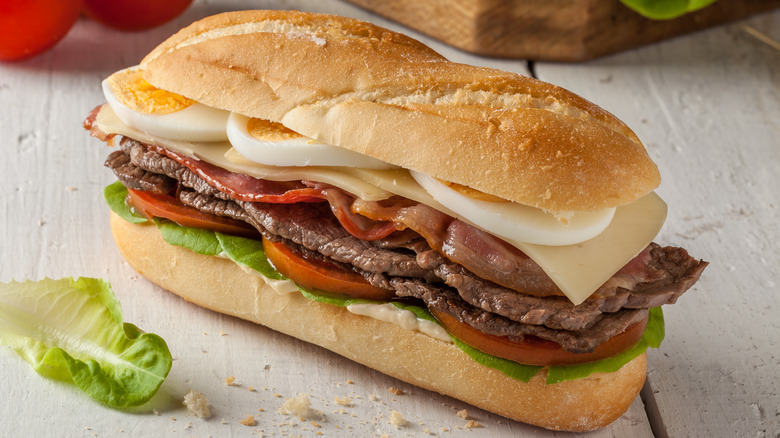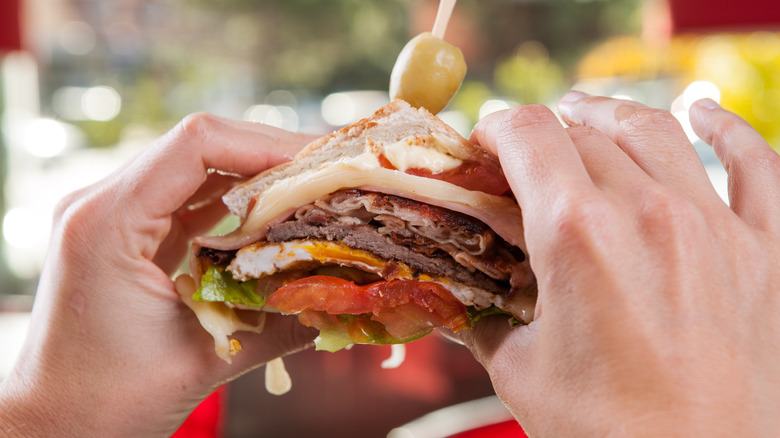The Seaside Origins Of The Chivito Sandwich
People around the world enjoy sandwiches in different ways, and Uruguay is no exception. The roots of its chivito sandwich run deep, dating back to 1944. That year, chef Antonio Carbonaro was working the kitchen at El Mejillón, a seaside restaurant in the popular Punta del Este resort, when a guest requested something unusual. She reportedly hailed from Córdoba, a mountainous province in Argentina where cabrito Córdobes, or Córdoban goat meat, was a culinary staple — and that's exactly what she wanted.
The woman requested a sandwich with the meat, and while this no doubt would have been delicious (not to mention that goat is overall more nutritious than lamb), El Mejillón didn't have goat meat in stock. Not one to back down from a challenge, Carbonaro decided to get creative. He whipped up a sandwich with steak, ham, cheese, lettuce, and mayonnaise, presenting it to the customer as the "chivito," which translates to "little goat." Whether or not the Argentine woman enjoyed the sandwich has been lost to time. The name stuck, though, and today the sandwich is regarded as one of Uruguay's most iconic dishes.
What makes an authentic Uruguayan chivito sandwich?
There are several variations of the chivito out there, including the chivito Canadienese which adds Canadian bacon, onions, peppers, and olives to the sandwich. If you want to make an authentic Uruguayan chivito, though, look no further than Alejandro Sequeira, co-author of "Chivito: The King of Sandwiches." Sequeira lays out a specific technique for the filling, saying that the ham should be folded over the cheese like a "booklet," with the lettuce leaves always serving as a base (via Parts Unknown). This, Sequeira says, will "prevent the bottom slice of the bread from getting soggy." Since Uruguayans prefer using softer breads for their sandwiches, avoiding excess moisture is paramount. (Incidentally, you should apply expert layering techniques to all of your sandwiches, not just the chivito — it's a sure way to never eat a messy sandwich again.)
In terms of ingredients, the Uruguayan chivito has evolved since 1944. In addition to Antonio Carbonaro's five ingredients, the modern iteration contains tomatoes and eggs, making an already-hefty sandwich even more imposing (and tempting). Some variations add fresh bell peppers to the mix, adding a crisp sweetness to contrast with the soft bread, rich meat, gooey cheese, buoyant egg whites, and crunchy peppers.

